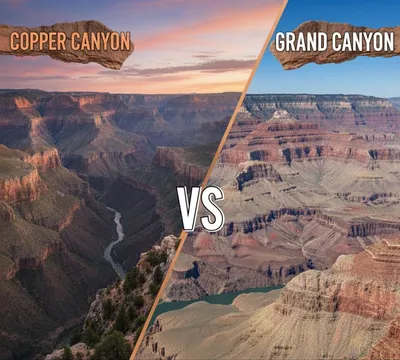
Copper Canyon vs Grand Canyon: Why Mexico's Version is 4X Better (2025 Guide)
Copper Canyon vs Grand Canyon: Why Mexico’s Version is 4X Better (2025 Guide)
When most people think of North America’s greatest canyon, the Grand Canyon in Arizona immediately comes to mind. But what if I told you there’s a canyon system in Mexico that’s four times larger, significantly deeper, and offers experiences you simply can’t find anywhere else?
Welcome to Mexico’s Copper Canyon – or Barrancas del Cobre – a spectacular network of canyons that puts even the Grand Canyon to shame in terms of sheer size and cultural richness.
After visiting both canyon systems multiple times, I can confidently say that Mexico’s Copper Canyon offers a more authentic, diverse, and awe-inspiring experience than its famous Arizona counterpart.
In this comprehensive comparison, I’ll break down exactly why Copper Canyon vs Grand Canyon isn’t even a fair fight – and why your next canyon adventure should definitely be in Mexico.
Quick Comparison: Copper Canyon vs Grand Canyon at a Glance
| Feature | Copper Canyon (Mexico) | Grand Canyon (Arizona) |
| Size | 65,000 km² (25,000 sq mi) | 4,926 km² (1,902 sq mi) |
| Maximum Depth | 1,879 m (6,167 ft) | 1,600 m (5,249 ft) |
| Canyon System | 7 major canyons | 1 main canyon |
| Annual Visitors | ~500,000 | ~6 million |
| Indigenous Culture | Living Tarahumara communities | Historical sites only |
| Transportation | Scenic train (El Chepe) | Roads, helicopters, hiking |
| Climate Diversity | Tropical to alpine | Desert to temperate |
Size & Scale: Mexico’s Canyon System Dominates
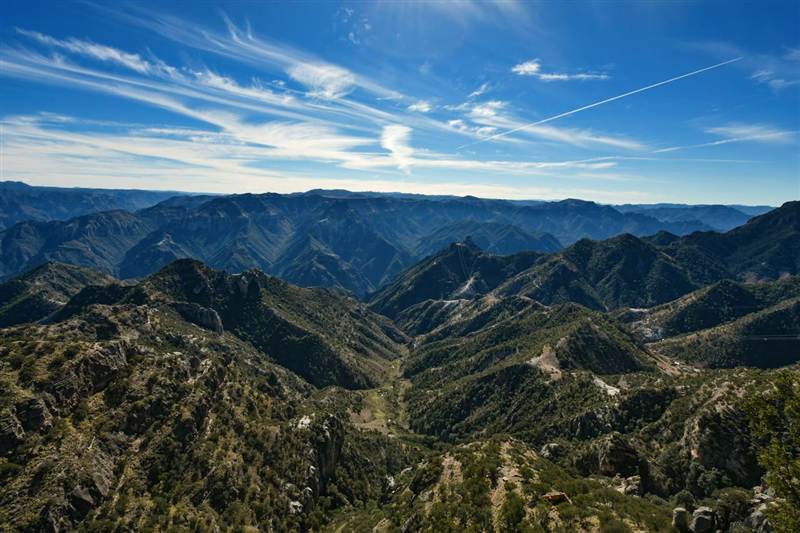
Let’s start with the numbers that really matter. The Barrancas del Cobre system encompasses a staggering 65,000 square kilometers (25,000 square miles), making it literally four times larger than Arizona’s Grand Canyon at just 4,926 square kilometers.
But size isn’t everything – depth matters too. The deepest canyon in the Copper Canyon system, Urique Canyon, plunges to an incredible 1,879 meters (6,167 feet) below the rim. That’s nearly 300 meters deeper than the Grand Canyon’s maximum depth.
Standing on the rim at Divisadero, looking into the Urique Canyon, the sheer scale is overwhelming. The Grand Canyon feels almost intimate by comparison.
What makes the Copper Canyon vs Grand Canyon comparison even more dramatic is that Mexico’s system isn’t just one canyon – it’s a network of seven major canyons formed by six different rivers. Each canyon has its own personality, geological features, and ecosystems.
The Seven Canyons of Copper Canyon
- Urique Canyon – The deepest at 1,879 meters
- Sinforosa Canyon – Known for its dramatic waterfalls
- Batopilas Canyon – Historical mining significance
- Candameña Canyon – Remote and pristine
- Huapoca Canyon – Best for adventure activities
- Chínipas Canyon – Diverse wildlife habitat
- Oteros Canyon – Accessible from Creel
Compare this to the Grand Canyon’s single (albeit impressive) gorge, and you begin to understand why many travelers consider the Copper Canyon system superior in terms of diversity and exploration opportunities.
Cultural Richness: Living Heritage vs. Historical Sites
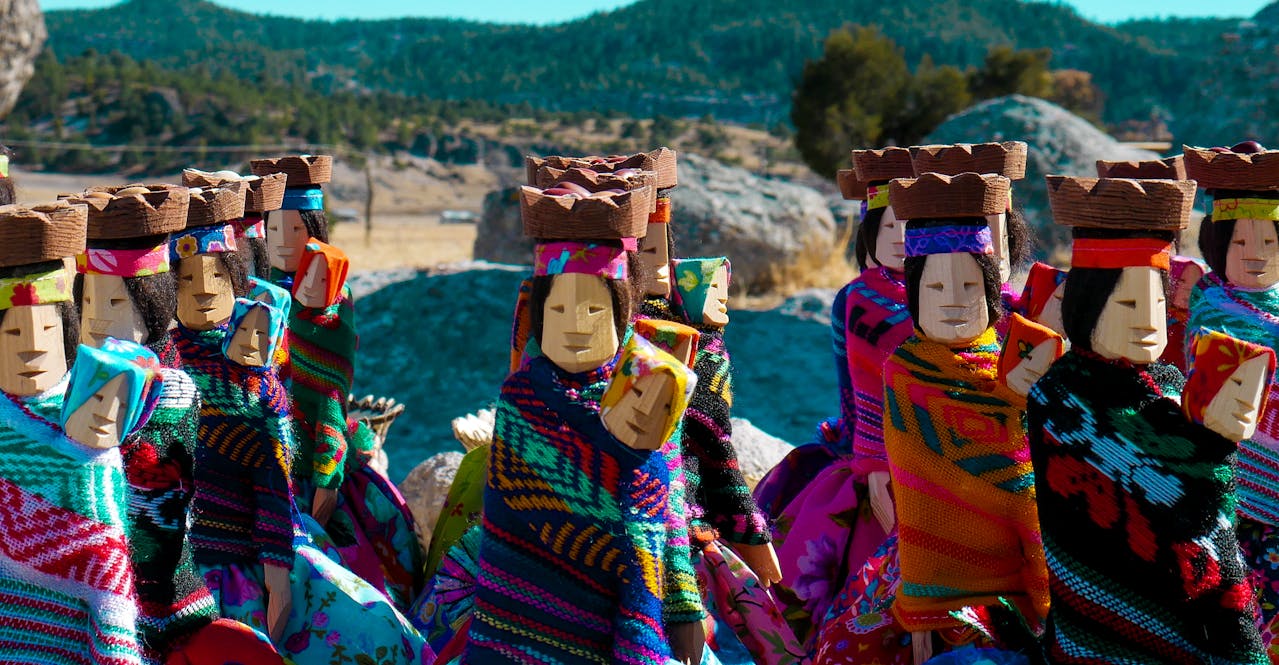
Here’s where the Copper Canyon vs Grand Canyon debate becomes no contest at all. While the Grand Canyon certainly has historical significance and archaeological sites, Mexico’s Copper Canyon is home to a living, breathing indigenous culture.
The Tarahumara people (who call themselves Rarámuri, meaning “those who run fast”) have called these canyons home for over 400 years. Today, approximately 50,000 Tarahumara continue to live in the canyon system, maintaining their traditional way of life.
Meeting Tarahumara families in their traditional cave dwellings and learning about their incredible running culture was the highlight of my Copper Canyon experience – something impossible at the Grand Canyon.
What Makes Tarahumara Culture Special
- Traditional craftsmanship: Beautiful handwoven baskets, pottery, and textiles
- Running culture: Famous for ultra-marathon running abilities
- Sustainable living: Traditional farming and cave dwellings
- Spiritual practices: Unique blend of indigenous and Catholic beliefs
- Language preservation: Still speak their native Tarahumara language
When you visit the Copper Canyon, you’re not just seeing a geological wonder – you’re experiencing a living museum of indigenous Mexican culture that has survived for centuries.
Learn more about Mexico’s indigenous heritage in our guide to Indigenous Groups in Mexico
Transportation & Adventure: Train vs. Tour Bus
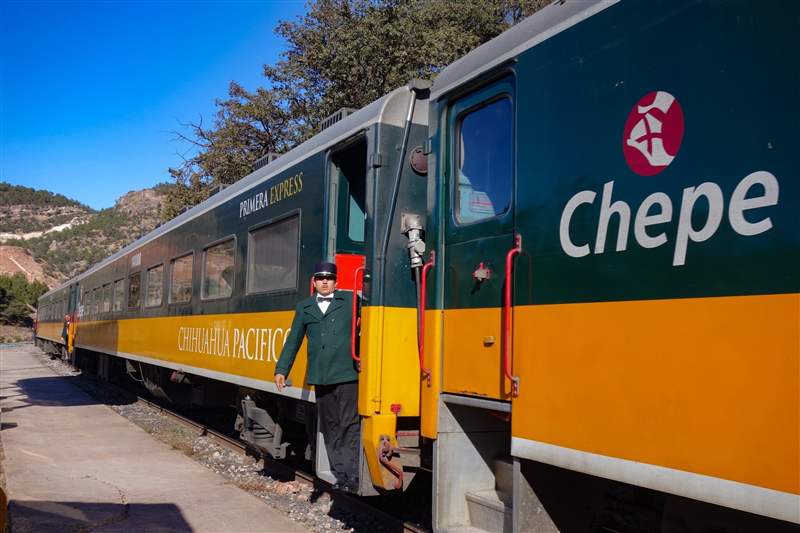
The way you experience each canyon system tells a story about the destination itself. The Grand Canyon is accessible by car, bus tours, and helicopter rides – all fine options, but fairly conventional.
Copper Canyon, however, offers something truly special: El Chepe train – Mexico’s only remaining passenger train and one of the world’s most scenic railway journeys.
Why El Chepe Beats Any Grand Canyon Experience
- Engineering marvel: 653 kilometers through 86 tunnels and 37 bridges
- Elevation changes: From sea level to 2,400 meters altitude
- Climate diversity: Tropical coast to pine forests in one journey
- Multiple stops: Creel, Divisadero, Batopilas
- Authentic experience: Not just tourism, but local transportation
The moment the El Chepe train rounds the first canyon viewpoint and you see the vast Copper Canyon system stretching to the horizon, you realize this is an experience the Grand Canyon simply cannot match.
Planning your train journey? Read our complete guide to the Chepe Train through Copper Canyon
Natural Features: Waterfalls vs. Desert Views
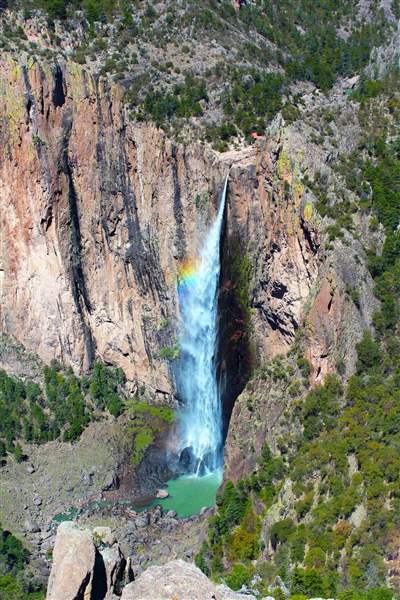
Both canyon systems are geological marvels, but they offer completely different natural experiences. The Grand Canyon is undeniably beautiful with its layered rock formations and desert ecology. But Copper Canyon’s natural diversity is simply more impressive.
Copper Canyon’s Natural Advantages
- Spectacular waterfalls: Basaseachic Falls (246m), Cascada de Piedra Volada (453m)
- Hot springs: Natural thermal pools throughout the system
- Climate diversity: From tropical to alpine zones
- Diverse ecosystems: Pine forests, tropical valleys, cloud forests
- Wildlife variety: Over 290 bird species, Mexican wolves, jaguars
The Barrancas del Cobre formation story is equally fascinating. Unlike the Grand Canyon’s primarily horizontal rock layers carved by the Colorado River, Copper Canyon was formed by volcanic activity and tectonic movement over 20-30 million years, creating more diverse geological features.
The copper-colored walls that give the canyon its name create an ever-changing palette of colors throughout the day – something I found more dramatic than the Grand Canyon’s famous sunset colors.
Climate & Best Times to Visit
Understanding when to visit each canyon system can make or break your experience. Here’s where the Copper Canyon vs Grand Canyon comparison gets interesting from a practical standpoint.
Copper Canyon Climate Advantages
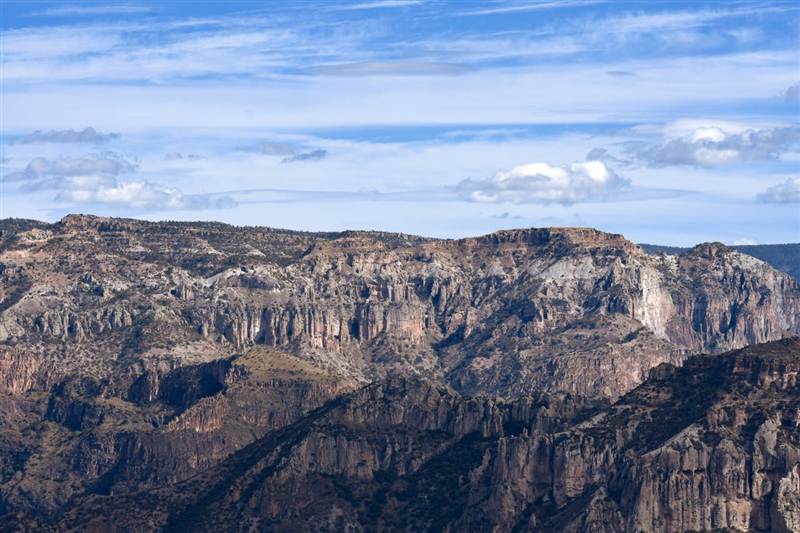
- Year-round visitation: Comfortable temperatures in canyon depths even in winter
- Seasonal variety: Dramatic changes from rim to bottom
- Best months: October-April for comfortable weather
- Rainy season benefits: Waterfalls at full power (July-September)
- Winter advantages: Snow on rims, warm in valleys
Grand Canyon Limitations
- Extreme summer heat: Temperatures exceed 40°C (104°F) at canyon bottom
- Winter closures: North Rim closed October-May
- Crowded peak seasons: Summer months are overwhelmed with visitors
- Limited seasonal variety: Desert climate throughout
I’ve visited Copper Canyon in both winter and summer. While the Grand Canyon becomes uncomfortably hot or cold depending on season, Copper Canyon offers comfortable exploration year-round thanks to its elevation diversity.
Adventure Activities & Experiences
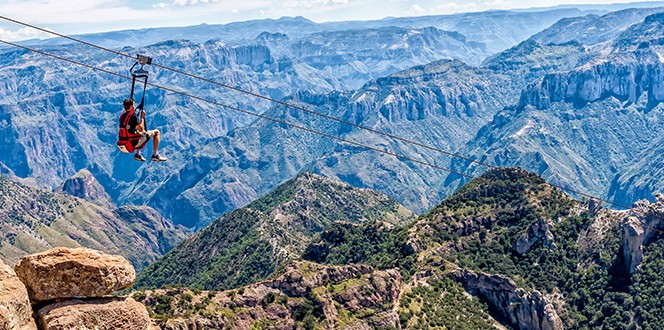
While both destinations offer outdoor adventures, Copper Canyon’s activity diversity surpasses the Grand Canyon’s options significantly.
Unique Copper Canyon Adventures
- World-class ziplines: 2.5km zipline system at Divisadero
- Cave exploration: Traditional Tarahumara cave dwellings
- Hot springs bathing: Natural thermal pools throughout canyons
- Cultural homestays: Sleep in traditional Tarahumara communities
- Waterfall rappelling: Multiple waterfall climbing opportunities
- Traditional festivals: Easter celebrations with Tarahumara ceremonies
Standard Grand Canyon Activities
- Rim trail walking
- Helicopter tours
- River rafting (Colorado River)
- Hiking trails
- Mule rides
Don’t get me wrong – Grand Canyon activities are fantastic. But Copper Canyon offers more diverse, culturally-integrated experiences that you literally cannot find anywhere else in North America.
Cost Comparison & Accessibility
Budget considerations often determine destination choices. Here’s how the Copper Canyon vs Grand Canyon economics break down:
Copper Canyon Cost Advantages
- El Chepe train tickets: $35-80 USD depending on class
- Accommodation: $20-150 USD per night (wide range available)
- Local food: $5-15 USD per meal
- Activities: $10-50 USD for most adventures
- Total daily budget: $80-200 USD per person
Grand Canyon Typical Costs
- Park entrance: $35 USD per vehicle
- Accommodation: $150-400 USD per night (limited options)
- Food: $15-40 USD per meal (limited dining options)
- Helicopter tours: $200-500 USD per person
- Total daily budget: $250-500 USD per person
For the same budget as a basic Grand Canyon trip, you can experience luxury accommodations, gourmet Mexican cuisine, and exclusive cultural experiences in Copper Canyon.
Crowds & Tourism Experience
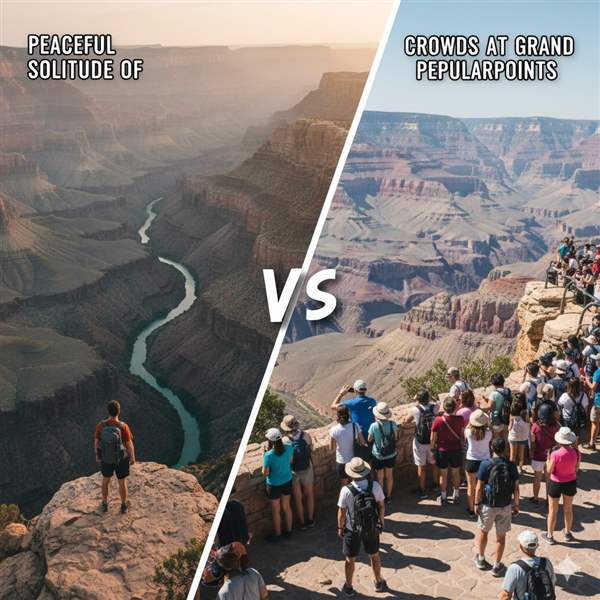
Perhaps the most significant difference between these two destinations is the tourism experience itself. The numbers tell the story:
- Grand Canyon: 6+ million annual visitors
- Copper Canyon: ~500,000 annual visitors
This 12:1 ratio means that visiting Copper Canyon feels like discovering a secret, while the Grand Canyon often feels like visiting a natural theme park.
At popular Grand Canyon viewpoints, I’ve waited 20 minutes just to take a photo without other tourists in the frame. In Copper Canyon, I’ve had entire viewpoints to myself for hours.
Why Copper Canyon Offers a Better Tourism Experience
- Authentic interactions: Meet real locals, not just tour guides
- Flexible exploration: No rigid tour schedules or crowded paths
- Photography freedom: Unobstructed views and unique angles
- Cultural immersion: Experience genuine Mexican canyon culture
- Personal discovery: Feel like an explorer, not a tourist
Getting There: Practical Travel Information
Both destinations require planning, but accessing each reveals their character.
Reaching Copper Canyon
- Fly to: Chihuahua or Los Mochis airports
- Train journey: 13-hour scenic ride through the canyons
- Best base towns: Creel, Divisadero, El Fuerte
- Planning time: Minimum 3-4 days recommended
Reaching Grand Canyon
- Fly to: Phoenix or Las Vegas (3-4 hour drive)
- Direct access: Drive straight to rim viewpoints
- Visit duration: Can be “done” in 1-2 days
- Accommodation: Book months in advance
The journey itself is part of Copper Canyon’s appeal – you can’t just drive up to a viewpoint. The adventure begins the moment you board El Chepe.
Which Canyon Should You Choose?
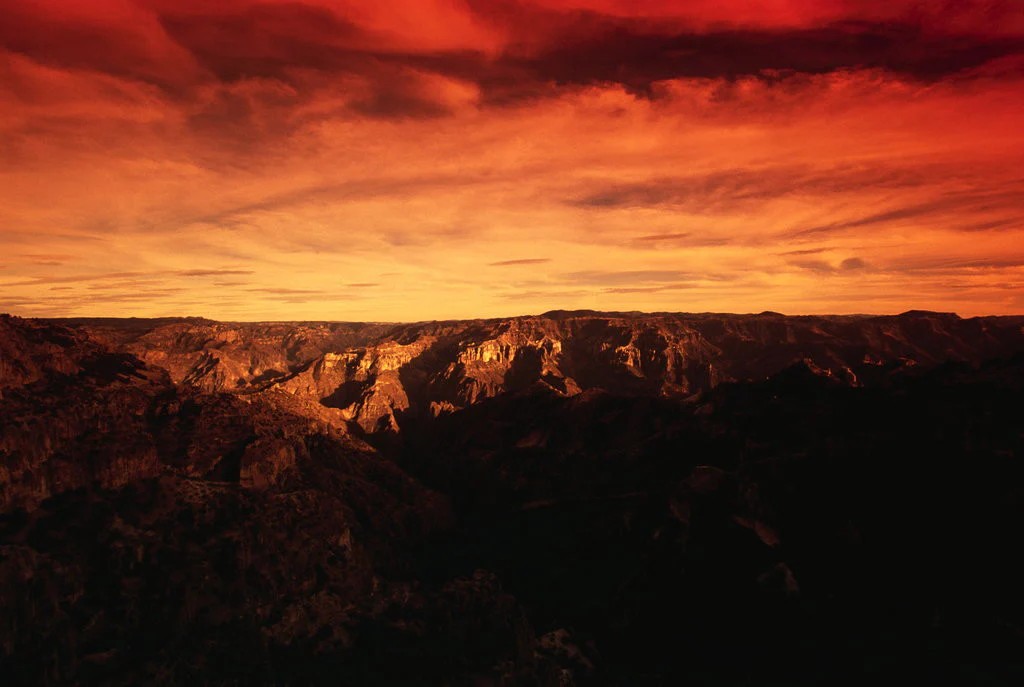
After exploring both canyon systems extensively, here’s my honest recommendation based on different travel styles:
Choose Copper Canyon If You Want:
- Authentic cultural experiences with indigenous communities
- Diverse adventures beyond just sightseeing
- Value for money and fewer crowds
- Unique transportation experience (El Chepe train)
- Climate diversity and year-round comfort
- Bragging rights to visiting the larger, deeper canyon system
Choose Grand Canyon If You Want:
- Easy accessibility and developed infrastructure
- Iconic, world-famous photo opportunities
- Well-marked trails and guided tour options
- English-speaking environment
- Predictable tourism experience
If you want to check a famous landmark off your bucket list, visit the Grand Canyon. If you want a life-changing adventure that few people have experienced, choose Copper Canyon.
Planning Your Copper Canyon Adventure
Convinced that Mexico’s Copper Canyon deserves the top spot on your travel list? Here’s how to make it happen:
Essential Planning Steps
- Book El Chepe train tickets in advance (especially during peak season)
- Plan minimum 4-5 days to properly explore the canyon system
- Pack for climate diversity – layers are essential
- Learn basic Spanish phrases for better cultural interactions
- Bring cash – many areas don’t accept credit cards
- Consider hiring local guides for Tarahumara community visits
Recommended Itinerary
- Day 1-2: Arrive in El Fuerte, explore colonial town
- Day 3: Board El Chepe train to Divisadero
- Day 4: Explore viewpoints and zipline adventures
- Day 5: Continue to Creel, visit Tarahumara communities
- Day 6: Optional: Batopilas day trip
- Day 7: Return journey to Chihuahua
Copper Canyon vs Grand Canyon: Final Verdict
After comparing every aspect of these two incredible canyon systems, the verdict is clear: Mexico’s Copper Canyon offers a superior travel experience for adventurous travelers seeking authentic cultural immersion, diverse activities, and unparalleled natural beauty.
While the Grand Canyon deserves its reputation as an iconic natural wonder, it simply cannot match Copper Canyon’s combination of:
- Sheer scale – 4 times larger and significantly deeper
- Cultural richness – living indigenous communities
- Adventure diversity – unique activities and transportation
- Value proposition – more experience for less money
- Authentic exploration – fewer crowds, more discovery
The Grand Canyon is something you visit and admire. Copper Canyon is something you experience and live. The difference is profound.
If you’re planning a canyon adventure and can only choose one, let Mexico’s Barrancas del Cobre show you what the Grand Canyon wishes it could be – larger, deeper, more diverse, and infinitely more culturally enriching.
The question isn’t whether Copper Canyon is better than the Grand Canyon. After experiencing both, the real question is: why would you settle for anything less than Mexico’s magnificent canyon system?
Ready to experience Mexico’s superior canyon system? Start planning your Copper Canyon adventure today and discover why smart travelers are choosing Mexico over Arizona.
Continue exploring Mexico’s natural wonders with our guides to Mexico’s Best Cenotes and Mexico’s National Parks